Coronal plane deformity around the knee in the skeletally immature population: A review of principles of evaluation and treatment
- PMID: 35633744
- PMCID: PMC9124997
- DOI: 10.5312/wjo.v13.i5.427
Coronal plane deformity around the knee in the skeletally immature population: A review of principles of evaluation and treatment
Abstract
Coronal plane deformity around the knee, also known as genu varum or genu valgum, is a common finding in clinical practice for pediatricians and orthopedists. These deformities can be physiological or pathological. If untreated, pathological deformities can lead to abnormal joint loading and a consequent risk of premature osteoarthritis. The aim of this review is to provide a framework for the diagnosis and management of genu varum and genu valgum in skeletally immature patients.
Keywords: Genu valgum; Genu varum; Guided growth; Knee deformity; Lower limb deformity; Osteotomy; Pediatric deformity.
©The Author(s) 2022. Published by Baishideng Publishing Group Inc. All rights reserved.
Conflict of interest statement
Conflict-of-interest statement: Authors declare they have not conflict of interests.
Figures
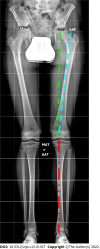

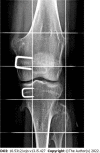
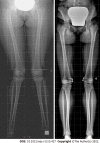
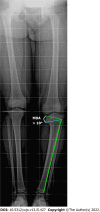
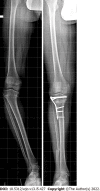
References
-
- Paley D. Principles of Deformity Correction. In: Paley D. Normal Lower Limb Alignment and Joint Orientation. Heidelberg: Springer, 2002: 1-18.
-
- Salenius P, Vankka E. The development of the tibiofemoral angle in children. J Bone Joint Surg Am. 1975;57:259–261. - PubMed
-
- Sabharwal S, Zhao C, Edgar M. Lower limb alignment in children: reference values based on a full-length standing radiograph. J Pediatr Orthop. 2008;28:740–746. - PubMed
-
- Moreland JR, Bassett LW, Hanker GJ. Radiographic analysis of the axial alignment of the lower extremity. J Bone Joint Surg Am. 1987;69:745–749. - PubMed
-
- Brooks WC, Gross RH. Genu Varum in Children: Diagnosis and Treatment. J Am Acad Orthop Surg. 1995;3:326–335. - PubMed
Publication types
LinkOut - more resources
Full Text Sources

